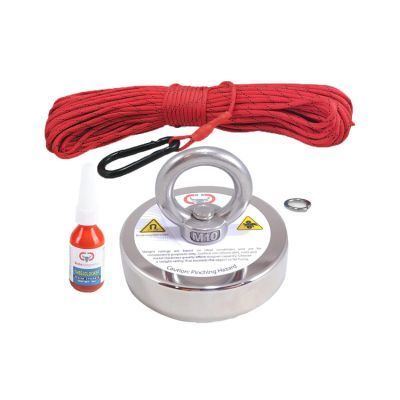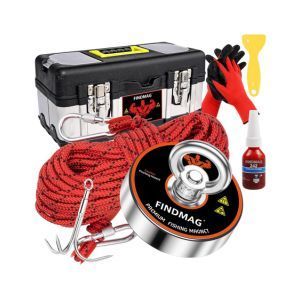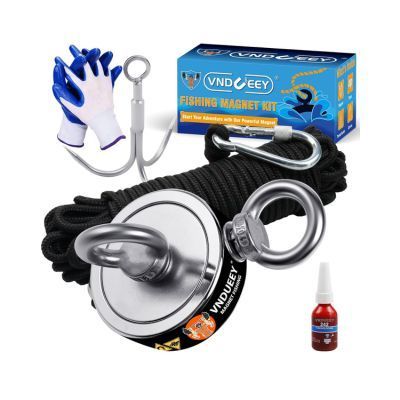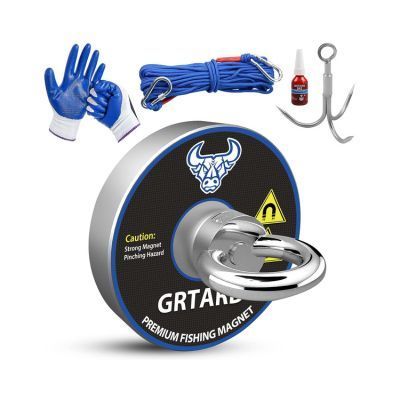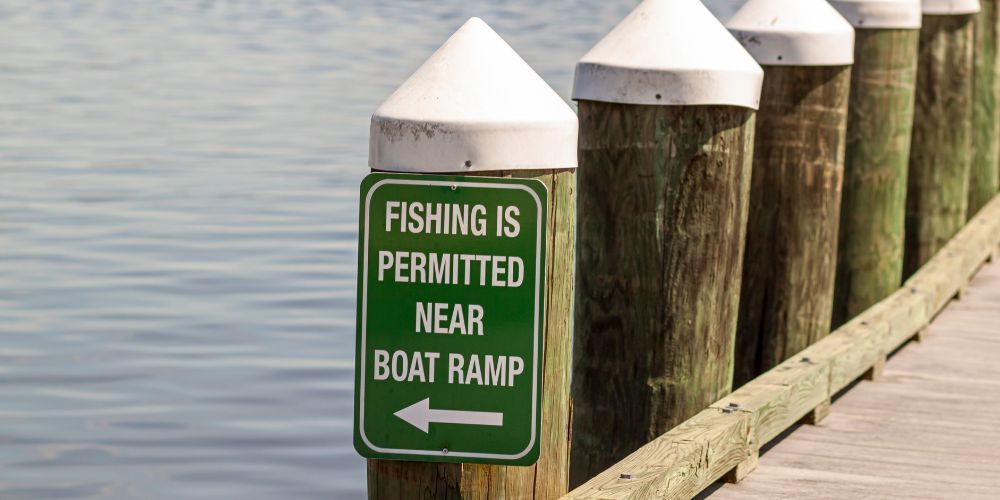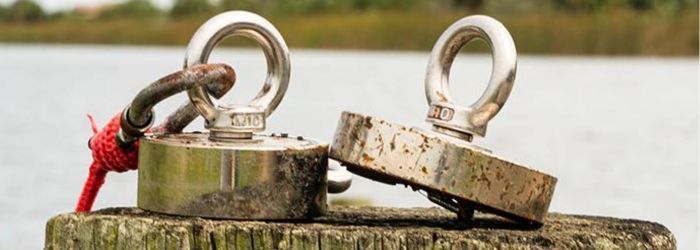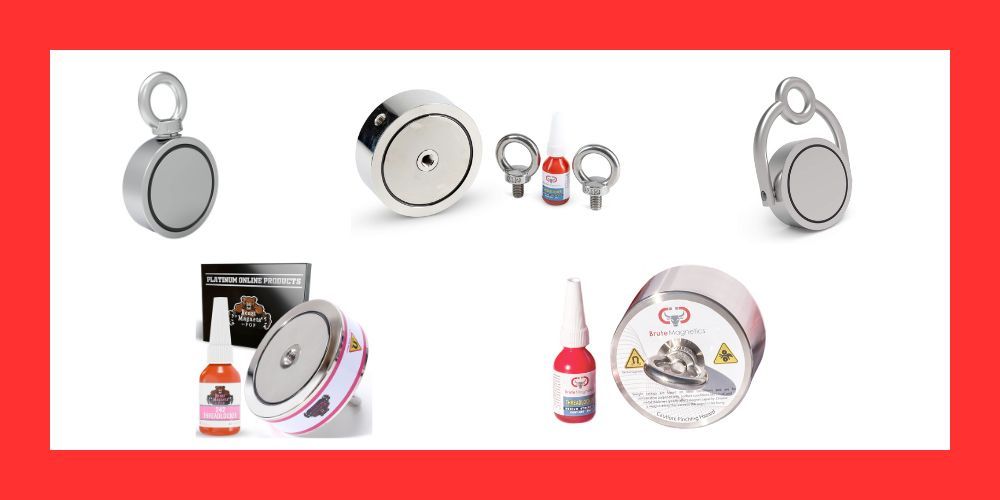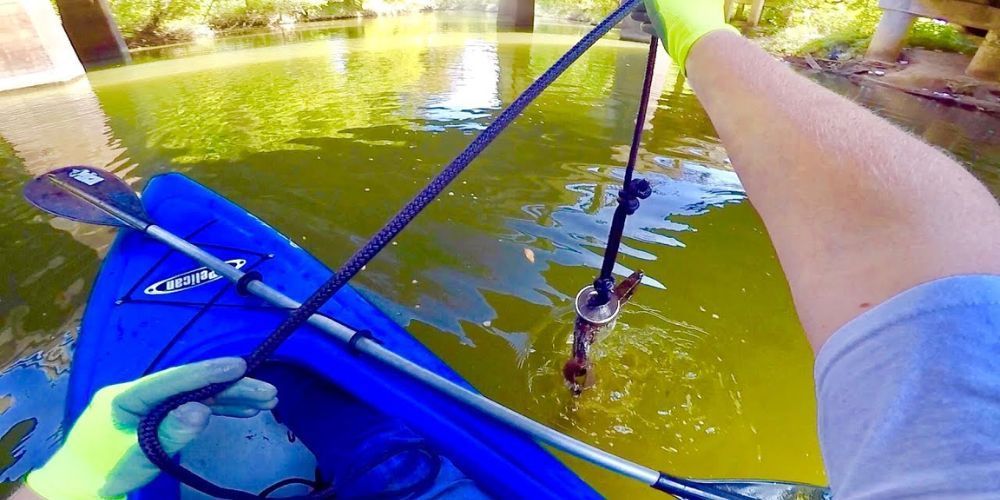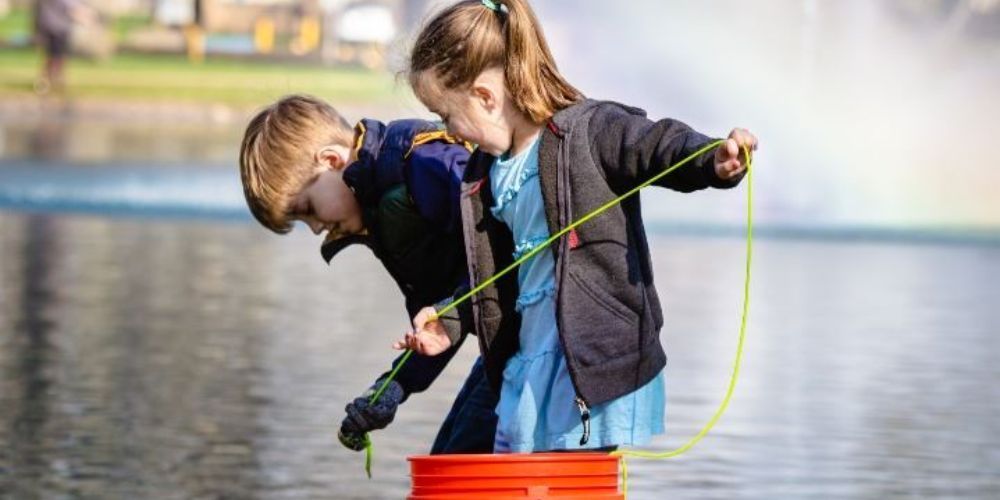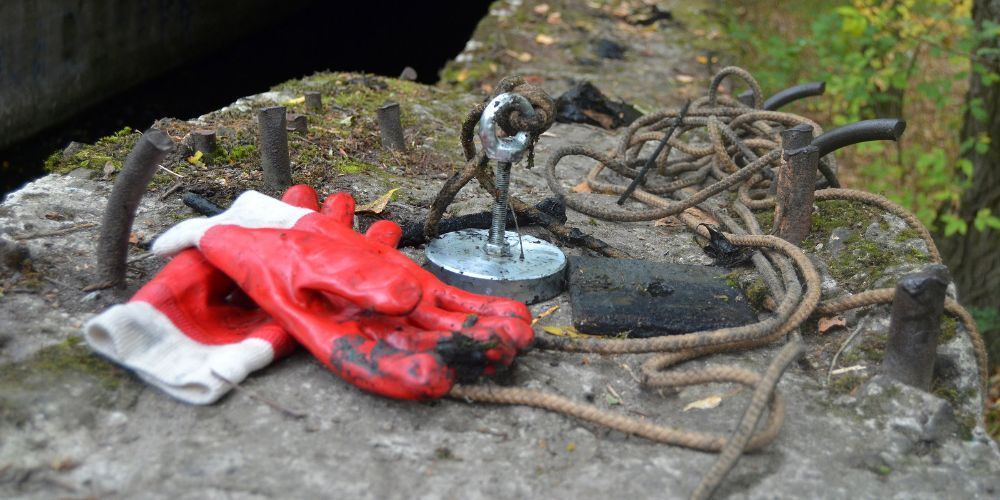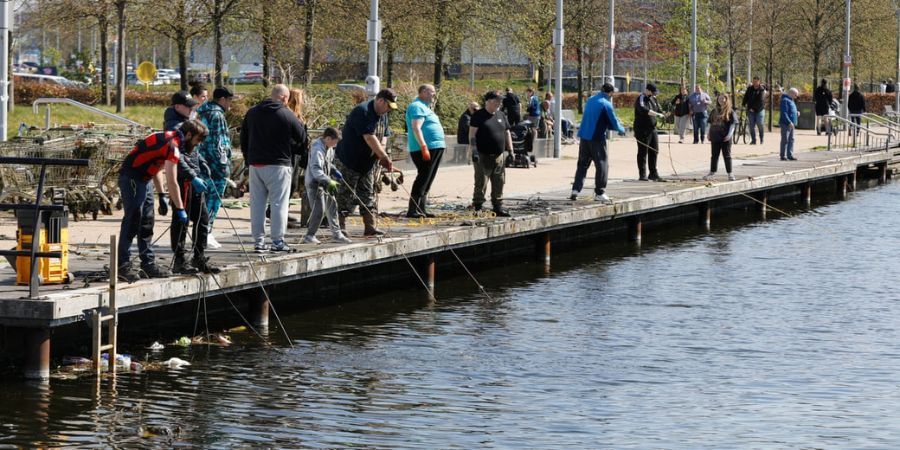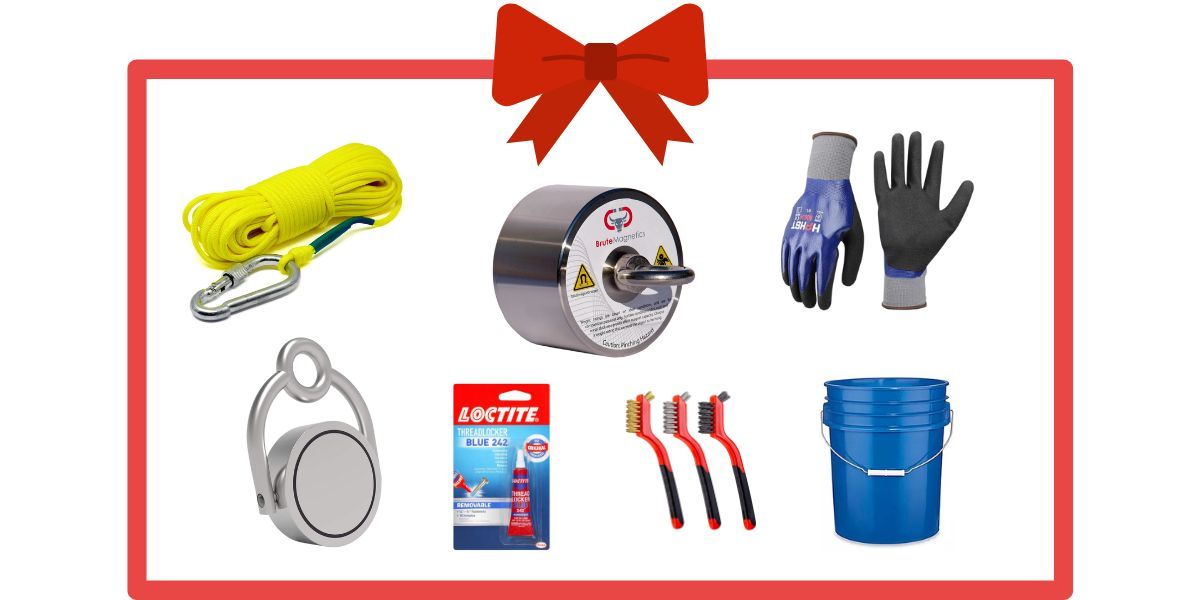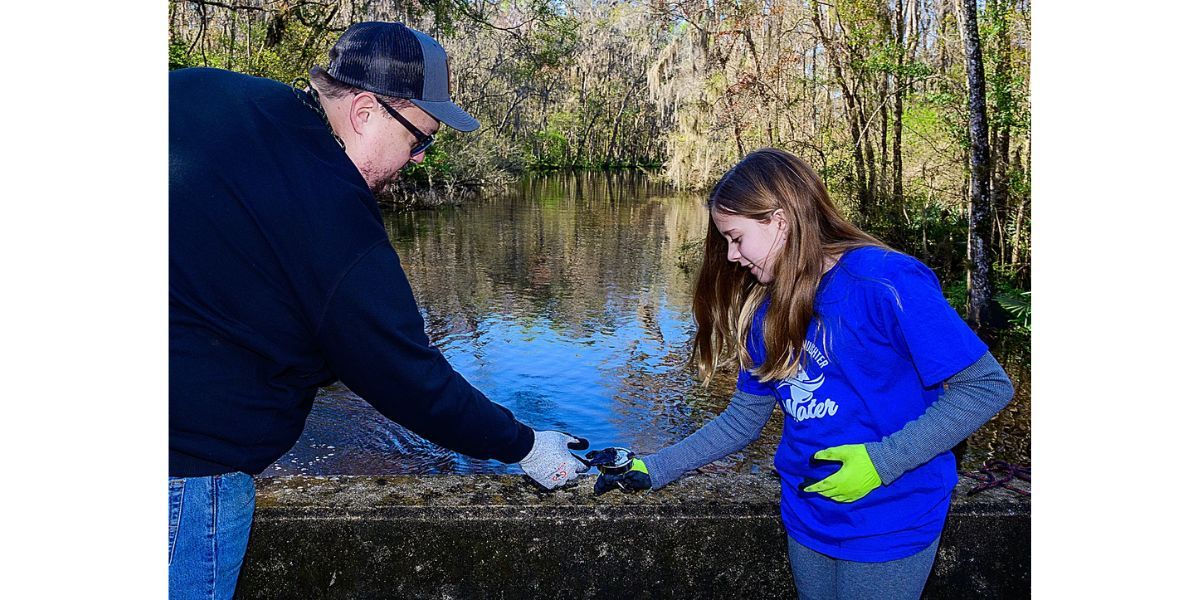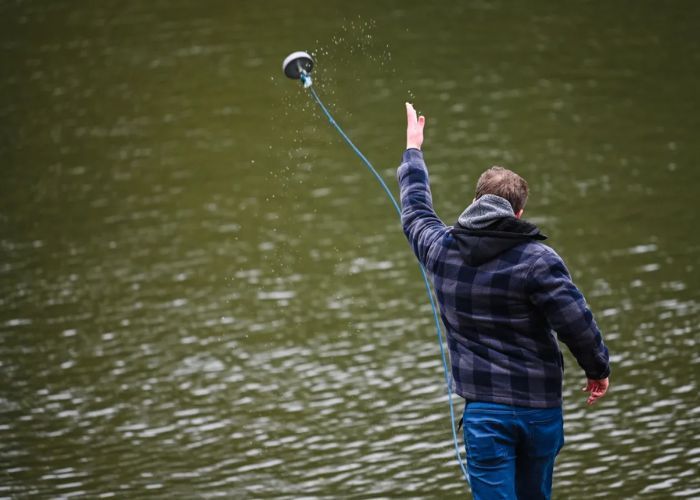The Ultimate Beginners Guide to Magnet Fishing: Tips, Techniques, and Locations
Imagine standing on the edge of a serene lake, casting a strong magnet attached to a sturdy rope into the water. With a mix of anticipation and curiosity, you slowly retrieve it, hoping that it will bring up an artifact lost to time. This is the allure of magnet fishing—an activity that marries the thrill of treasure hunting with the peace of nature. It’s an accessible hobby that invites anyone with a sense of adventure to uncover hidden histories beneath the surface.
Understanding where to start can be overwhelming. That's why we’ve put considerable effort into crafting this guide. We've researched local laws, pinpointed essential equipment, and gathered expert tips to ensure your magnet fishing journey is rewarding from the get-go. Dive in as we explore what you'll need to prepare before embarking on your first magnet fishing experience—from understanding basics to planning and compiling your checklist.
To start magnet fishing, acquire a strong neodymium magnet, a synthetic rope with suitable strength, and cut-resistant gloves for safety. After securing the necessary gear, choose a location near water bodies like lakes or rivers. Lastly, carefully lower the magnet into the water, dragging it along the bottom to find and retrieve submerged objects.
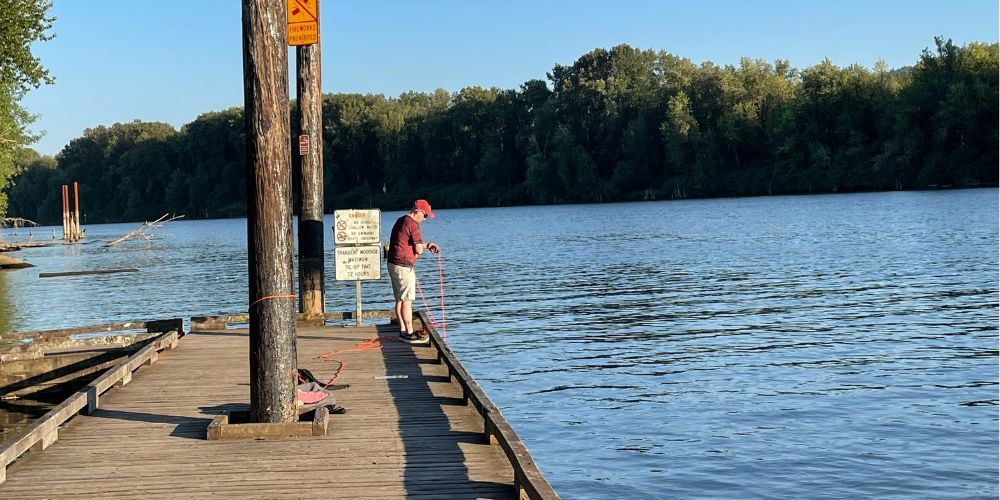
Preparing for Your First Magnet Fishing Experience
Before venturing out, it's important to research and understand local laws and regulations regarding magnet fishing in your area. Some places may have restrictions or require permits, so being aware of these rules is crucial before heading out. Consider seeking advice from local authorities or online magnet fishing communities for insights into the best locations and any legal aspects you need to consider. By gaining a clear understanding of the legal framework, you can ensure that your magnet fishing experience is enjoyable and free from any legal complications.
Once you're familiar with the legal aspects, it's time to plan your excursion. Keep an eye on the weather forecast and select a suitable time when conditions are safe for magnet fishing. Additionally, identifying a less crowded time can enhance your overall experience, allowing you to explore your chosen location without disturbance. Planning also includes ensuring that you have enough daylight to conduct your magnet fishing safely and efficiently.
Checklist for Beginners
Creating a checklist of essential items is a key step for beginners:
- Sturdy Backpack: essential for carrying your gear comfortably.
- First Aid Kit: crucial for safety in case of any accidents or injuries during your expedition.
- Appropriate Attire: dress accordingly for weather and location.
By having a checklist and packing these essential items, you'll be better prepared to tackle unexpected situations and navigate different environments while magnet fishing.
So, armed with the necessary information and equipped with the right gear, you're ready to embark on your first magnet fishing excursion successfully.
With the groundwork laid for a successful magnet fishing adventure, it's now time to dive into the essential equipment and gear that will set you up for an engaging and fruitful experience.
Essential Equipment and Gear
Before embarking on your magnet fishing adventure, it's crucial to have the right equipment and gear. Each item plays a pivotal role in ensuring both safety and success during the experience. Let's dive into a comprehensive look at each one.
Neodymium Magnets
Neodymium magnets are the backbone of magnet fishing due to their exceptional strength. When selecting a neodymium magnet for this purpose, it's essential to consider the pulling force it provides. Pulling forces typically range from 250 lbs to over 1,000 lbs. Newcomers might find it beneficial to start with a mid-range strength magnet until they become more experienced with the activity.
It's important to remember that a higher pulling force will allow you to retrieve heavier items from bodies of water, but it also requires more strength and caution when handling. Therefore, finding the right balance of strength and manageability is key when choosing a neodymium magnet for magnet fishing.
Synthetic Rope
The rope you use for magnet fishing isn't just any ordinary rope; it needs to be strong, reliable, and specifically designed for this activity. A nylon-based rope is recommended as it offers durability and resistance to wear and tear from day-to-day use. Furthermore, a length of at least 50 feet is usually necessary for most magnet fishing scenarios.
It's vital that the synthetic rope is abrasion-resistant and capable of withstanding the weight the magnet can pull. The last thing you want is for your rope to fray or break while trying to retrieve a heavy object from the water.
Safety Gloves and Storage
When engaging in magnet fishing, you're likely to come across sharp or potentially hazardous objects retrieved from the water. It's therefore imperative to equip yourself with cut-resistant gloves that provide protection against injury while handling these items.
Additionally, having a sturdy storage container or bucket is invaluable for carrying found items. This not only makes transportation easier but also helps keep your discoveries organized and safely contained during transport.
Locking Carabiner
A locking carabiner plays a crucial role in ensuring the overall safety and efficiency of your magnet fishing endeavor. This attachment securely fastens the rope to the magnet, providing ease of use and peace of mind while preventing accidental detachment.
Investing in a locking carabiner may seem like a small detail, but its ability to prevent the loss of valuable gear in case of accidental detachment from the magnet makes it an essential accessory for magnet fishers.
In essence, each piece of equipment serves as an integral component in enhancing both safety and success during your magnet fishing excursions. By prioritizing top-quality neodymium magnets, sturdy synthetic ropes, cut-resistant gloves, and reliable locking carabiners, you set yourself up for an enjoyable and fruitful magnet fishing experience.
With the essential equipment at your disposal, let's now move on to setting up your magnet and rope for a successful session of magnet fishing.
Brute Magnetics 575lbs Bundle
Read ReviewFINDMAG 700lbs Magnet Fishing Kit
Read ReviewVNDUEEY 760lbs Magnet Fishing Kit
Read ReviewGRTARD 500 lbs Magnet Fishing Kit
Read Review760 lbs Magnet Fishing Kit for Beginners
Read Review700 lbs Beginners Maget Fishing Kit
Read ReviewSetting Up Your Magnet and Rope
Imagine standing at the edge of a tranquil lake, ready to cast your magnet into the water to uncover hidden treasures. But before embarking on your treasure-hunting expedition, it's crucial to ensure that your magnet and rope are set up correctly.
SELECTING THE RIGHT KNOT
The first step is learning to tie a Palomar knot. This knot comes highly recommended for securing the rope to the eyebolt on the magnet due to its strength and simplicity. It's essential to have a reliable knot that won't come loose while you're pulling in your haul. The Palomar knot provides that security, giving you peace of mind as you navigate through murky waters in search of hidden items.
THOROUGH INSPECTION OF EQUIPMENT
Before embarking on your magnetic fishing journey, it's critical to inspect both the magnet and rope for any damages or wear and tear. Even a tiny nick or frayed area on the rope can lead to mishaps during fishing, while a damaged magnet may hinder your ability to retrieve items efficiently.
Ensure that the magnet is firmly secured to the end of the rope, and the carabiner is locked properly to prevent any accidental detachment while in use. This careful inspection not only ensures safety but also preserves the integrity of your equipment for future expeditions.
CONDUCTING A TEST RUN
To avoid any unexpected surprises while on the water, it's advisable to test your gear in a controlled environment before heading out on your fishing trip. Consider testing your setup in your backyard or any open space where you can mimic real fishing conditions.
For instance, take some time to lower your magnet into a bucket of water or drag it across different surfaces to ensure that everything functions smoothly. Testing also provides an opportunity to practice maneuvering the magnet and rope and get a sense of how they handle various terrain.
By carefully setting up your magnet and rope, ensuring their integrity through thorough inspections, and conducting test runs, you lay the groundwork for a safe and successful magnet fishing experience. Now that everything is all set up, let's explore some valuable tips for maximizing your magnet fishing outings.
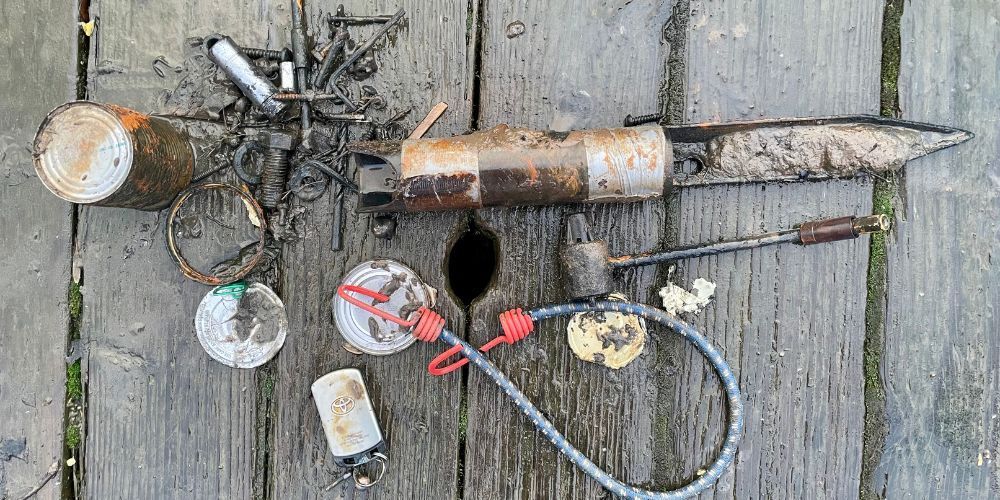
Finding the Perfect Location
Choosing the right spot for magnet fishing is crucial to a successful and enjoyable experience. Think about optimal locations – old bridges, docks, piers, and historical sites near water. These areas often hold a rich history and are more likely to conceal interesting finds, including potentially valuable or historically significant artifacts.
Next, consider utilizing online resources and forums where experienced magnet fishers share their successful locations. This can be an invaluable source of information that helps you compile a list of potential sites to visit and evaluate their suitability.
Check out our state by state guide on the top places to go magnet fishing in each state - Where to Magnet Fish.
Getting tips from experienced hobbyists is akin to receiving guidance from a knowledgeable friend before embarking on your own expedition.
In addition to finding the right site, pay close attention to environmental considerations. The location should be safe and provide easy access to the water. Avoid places with strong currents or hazardous wildlife. While urban areas with high foot traffic may yield more finds, don't overlook the allure of quiet, secluded spots where relics from bygone eras may await discovery.
Moreover, it's important to be mindful of environmental regulations and the impact of your presence on the chosen location. Always ensure that you have all necessary permits and permission to engage in magnet fishing in specific areas. Being respectful of local rules and nature will allow you to enjoy this hobby sustainably while preserving the environment for others to appreciate as well.
So start scouting for those spots—seek a place filled with history, intrigue, and excitement.
With the foundation laid for finding the perfect magnet fishing location, let's now move on to explore the throwing and retrieving techniques that can optimize your hauls in these promising spots.
Throwing and Retrieving Techniques
Mastering the art of casting your magnet into the water is pivotal for a successful magnet fishing expedition. Firstly, finding a comfortable grip on the rope to ensure complete control over the throw is essential.
Proper Throwing Form
Hold the end of the rope securely and swing the magnet in a controlled arc before releasing it into the water. Imagine your arm as a pendulum, creating a smooth, controlled motion that propels the magnet exactly where you want it. Keep practicing your throw to maximize distance without losing control.
Once the magnet breaks through the surface, its journey begins. But what happens next is equally important - now comes the dragging.
Dragging Methods
This is where your patience and precision come into play. Once the magnet is submerged, slowly drag it along the bottom, allowing it to latch onto metal objects. This requires a delicate touch and an attentive eye as you vary the dragging speed depending on the terrain of the waterbed.
Different types of bodies of water will have various obstacles lying on their beds. Whether it's mud, sand, or rocks, being adaptable in your approach could mean uncovering hidden treasures or ancient artifacts.
Keep in mind that as you're dragging, frequent hand motions can create vibrations that enhance the chances of attracting metal items—an almost magical process akin to whispering sweet nothings to lure hidden treasures from their watery slumber.
Retrieval Tips
As you begin to feel an object latch onto your magnet, remember that patience is key. Pull the rope steadily to avoid snagging. If the magnet catches on something heavy, use a back-and-forth motion to dislodge the object or gently pry it free. You never know what's lurking beneath; it could be anything from discarded bicycles to long-lost family heirlooms.
Remember, successful retrieval depends on not only good technique but also familiarity with your specific equipment and surrounding environment.
Perfecting this process is no easy feat. It requires finesse and an understanding of how metal objects behave in different water conditions. But with time and practice, you can turn magnet fishing into an art form—a treasure hunt under the guise of a calming hobby.
Now equipped with essential throwing and retrieving techniques for magnet fishing, let's dive into identifying and extracting finds to enhance your treasure hunting experience.
Identifying and Extracting Finds
So, you've successfully pulled something shiny out of the water—perhaps an old coin or a curious-looking object. The thrill of uncovering treasure is undeniable, but what's next? Let's discuss the different types of finds and how to handle them.
Types of Finds
Magnet fishing enthusiasts often uncover an array of items with historical, nostalgic, and sometimes even monetary value. Common finds include fishing lures, old coins, keys, and various historical artifacts. These items are usually small and relatively easy to clean and preserve.
Additionally, magnet fishers sometimes reel in larger and more unexpected objects such as bicycles, safes, or even firearms. When encountering potential weapons, extreme caution is advised—these items should be handled with utmost care and reported to the authorities for legal reasons and public safety.
Now that you've identified your finds, the next step is cleaning and discerning their value.
Cleaning and Identifying
Once retrieved, it's essential to handle the newly discovered items with care. A gentle scrub using water and a soft brush will help reveal any details hidden under layers of dirt and debris. This cleaning process may disclose crucial markings, inscriptions, or patterns that could aid in determining the age or origin of an item.
Furthermore, identifying potentially valuable or historically significant pieces can be a fascinating endeavor. Online databases or forums dedicated to historical relics often serve as valuable resources for matching found items with similar objects or obtaining relevant information.
Check out our post - The Magnet Fisher's Guide to Rust Removal and
How to Dispose of Magnet Fishing Finds: Safety, Legal, and Environmental Considerations
Legal Considerations
It's critical for magnet fishers to remain mindful of local laws governing discovered items. In some regions, particularly when firearms are involved, there are strict regulations regarding the reporting of certain finds to the authorities for legal and safety reasons. Adhering to these guidelines ensures not only a responsible approach to hobbyism but also upholds public safety standards and ethical considerations.
Each discovery has its own story to tell, and understanding the laws related to found items helps maintain integrity within the magnet fishing community.
With each find comes a responsibility—a duty not only to handle sought-after relics with care but also to comply with local regulations governing discovered objects. Taking these steps ensures that every treasure recovered serves as a testament to responsible treasure hunting and contributes positively to public safety awareness.
As we navigate through the waters of magnet fishing exploration, it's vital to prioritize safety at every turn. Now, let's cast our line into the realm of "Safety Tips and Best Practices.
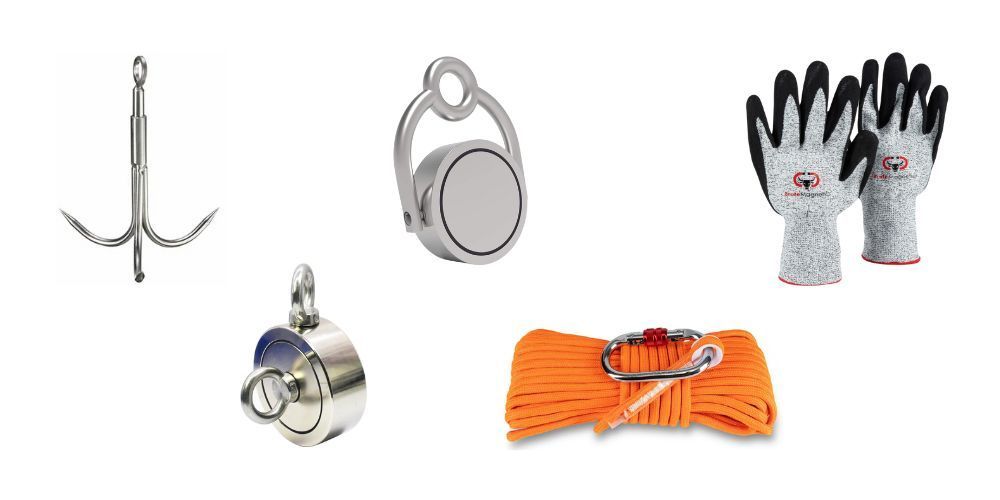
Safety Tips and Best Practices
Magnet fishing isn't just about finding treasures; it's also about ensuring you have a safe and responsible experience. By following essential safety guidelines, you can enjoy this hobby while minimizing potential risks to yourself and the environment.
Personal Safety
When it comes to personal safety, there are some key practices to keep in mind. Always fish with a buddy, especially if you're near deep water or unfamiliar surroundings. Besides the company being enjoyable, having someone with you ensures mutual safety in case of accidental slips or falls. Additionally, it's crucial to wear a PFD (personal flotation device) when magnet fishing from a boat or near deep waters. Even if you're an experienced swimmer, unpredictable circumstances can arise. Wearing a PFD provides an added layer of protection and peace of mind.
Your personal safety is paramount, so taking these precautions significantly reduces the risk involved in magnet fishing. Simple measures like wearing a PFD and having a buddy nearby can make all the difference in an emergency situation.
Environmental Respect
Respecting the environment is fundamental to responsible magnet fishing. It's important to avoid disrupting natural habitats and ensure that any waste or trash resulting from your activity is disposed of responsibly. This includes properly disposing of trash you may encounter during your magnet fishing expeditions. As passionate enthusiasts of our natural world, it's crucial to minimize disturbances to the ecosystem during our searches for hidden treasures.
The tranquility of local wildlife and natural ecosystems should be preserved at all costs. By adhering to environmentally conscious practices, we can ensure that magnet fishing does not have an adverse impact on the delicate balance of nature.
Handling Hazards
Amidst the excitement of pulling up intriguing finds, it's crucial to remain vigilant for sharp or dangerous objects that may be lurking beneath the water's surface. Should you retrieve any hazardous items such as sharp metals or even unexploded ordnance (UXO), handle them with extreme care. If there is any doubt about the safety of an item, it's imperative to consult local authorities or experts who can provide guidance on handling and disposal methods. Furthermore, proper documentation and reporting of potentially hazardous finds are essential for the overall safety of the community and environment.
By familiarizing ourselves with proper handling procedures for potentially dangerous objects, we can ensure that we mitigate any potential risks while contributing to a safer environment for everyone involved in this fascinating pastime.
Magnet fishing offers a thrilling blend of treasure hunting and outdoor adventure but prioritizing safety ensures that this experience remains enjoyable for all enthusiasts. With these safety tips in mind, embark on your magnet fishing journey and revel in the exciting discoveries that await!
Are there any legal considerations or restrictions when magnet fishing?
Yes, there are legal considerations and restrictions when magnet fishing. In many places, magnet fishing falls under general fishing regulations, meaning you need to obtain the necessary permits and follow specific rules regarding licenses and catch limits. Additionally, it's important to be aware of historical or archaeological sites that may have legal protection against disturbance. Local laws may also prohibit the removal of certain items like firearms or explosives. Violating these regulations can result in fines or even criminal charges.
What are some safety tips for magnet fishing?
Safety is crucial when magnet fishing to prevent injuries and ensure a positive experience. Here are some key tips:
- Wear Gloves: Protect your hands from sharp objects and rope burns.
- Use a Strong Rope: Ensure your rope can handle the weight of your finds and is securely tied to the magnet.
- Check Local Regulations: Make sure magnet fishing is permitted in your chosen location.
- Be Cautious with Heavy Objects: If you find something heavy, avoid straining your back. Consider using a grappling hook or asking for help.
- Avoid Strong Currents: Fast-moving water can be dangerous. Stick to calm areas, especially if you’re a beginner.
- Dispose of Waste Properly: Remove and properly dispose of any trash or hazardous materials you retrieve.
Where are the best places to go magnet fishing?
The best places for magnet fishing are locations with a history of human activity near water. Popular spots include:
- Bridges: People often drop or throw objects into the water from bridges.
- Docks and Piers: Busy areas where boats dock can be hotspots for lost items.
- Old Mills and Factories: Historical industrial sites may have discarded metal tools and machinery.
- Public Parks: Areas where people frequently gather may yield lost or discarded items.
- Rivers and Canals: These waterways have been used for transportation for centuries, making them potential treasure troves.
Always ensure that magnet fishing is allowed in your chosen location and be respectful of private property and environmental regulations.
What equipment do I need to start magnet fishing?
To start magnet fishing, you will need a few essential pieces of equipment. First and foremost, you'll need a strong neodymium magnet with a high pulling force, such as one with at least 300 lbs (136 kg) of magnetic strength. This ensures that you can attract and retrieve heavier objects from the water. Additionally, a sturdy and durable rope or nylon cord is necessary to attach to the magnet securely. It is also crucial to have gloves for protection, especially when handling potentially sharp or rusty items. Lastly, consider using a grappling hook or a carabiner to help with releasing stuck objects. Remember to always research local laws and locations for magnet fishing before heading out on your adventures.
What should I do with the items I find while magnet fishing?
The items you find while magnet fishing can range from mundane to fascinating. Here’s what you can do with them:
- Clean and Display: Clean interesting or historical finds and consider displaying them as part of your collection.
- Scrap Metal: Recycle metal objects that have no personal or historical value. This is environmentally friendly and can even earn you some money.
- Report Dangerous Items: If you find potentially dangerous items like weapons or unexploded ordnance, contact local authorities immediately.
- Research and Donate: Research the history of unique finds. If they have historical significance, consider donating them to a local museum or historical society.
- Dispose of Trash: Properly dispose of any trash or non-recyclable items you pull up to keep waterways clean and preserve the environment.
Author: Will Flaiz


